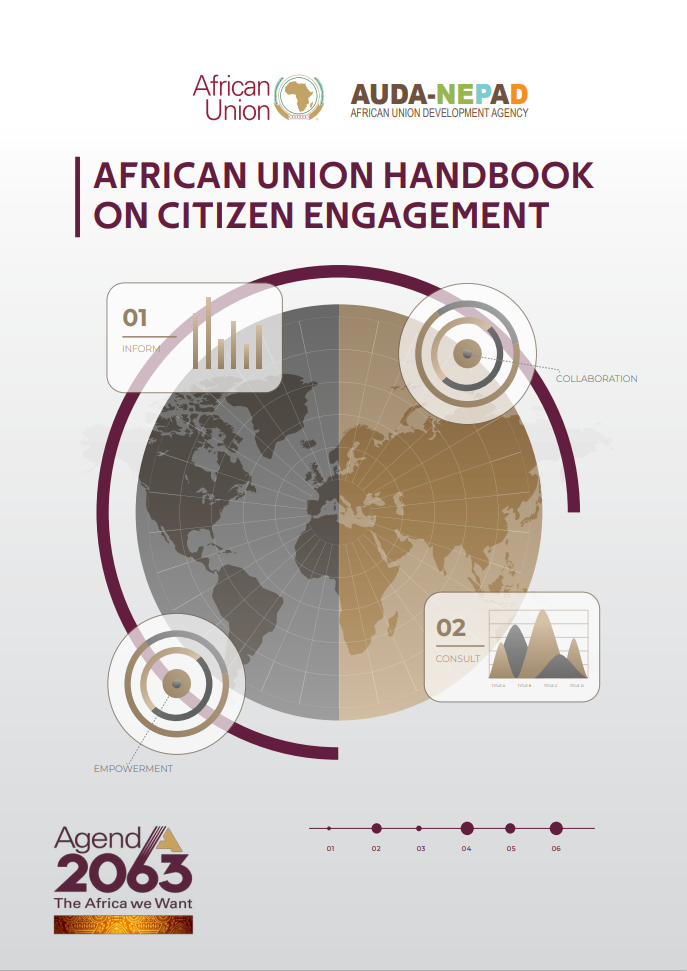The African Union Handbook on Citizen Engagement seeks to support the African Union Commission, Regional Economic Communities (RECs), Member States and stakeholders in conducting citizen engagement processes in a systematic and productive way. It builds on ongoing approaches to citizen engagement and aims at helping users to better understand specific approaches to citizen engagement and to guide them through the practical steps they can take to improve citizen engagement. This handbook is intended for use primarily by the African Union, Regional Economic Communities (RECs), Member States and stakeholders engaging with a broad range of citizens across Africa. This handbook is a useful tool for citizen engagement at continental, regional, national and subnational levels. To this end, this document defines citizen engagement as a top-down initiative by a governmental or intergovernmental body such as a local authority, a city or the African Union to encourage citizens to discuss, assess policies and contribute to projects. By contrast, citizen participation stems from the citizens themselves and is thus a bottom-up initiative. It is within this context, that the African Union Development Agency-NEPAD (AUDA-NEPAD) is promoting citizen engagement and effective participation of all stakeholders in the conception, design, implementation, monitoring, and evaluation of Agenda 2063 and Ten Year Implementation Plans, Regional, National and Sub-national Development Plans, Strategies, and initiatives. This is undertaken against the backdrop that engaged and empowered citizens, responsive civil society, private sector, academia, and parliament are key in steering Africa’s social and economic transformation. This handbook outlines different citizen engagement approaches, which can be used independently or in combination. Users should determine which approaches work best for their area of jurisdiction, as national contexts and political environments vary. It recognizes that citizen engagement cannot be achieved only through a single approach, multiple approaches often have a greater chance of success. To this end, the handbook will feature regular revisions to both the print and online versions, and we would encourage contributions and feedback on a rolling basis from readers.The Handbook is therefore divided into two distinct parts: Part 1: Chapter 1-5 focuses on the conceptual aspects of the handbook that allow the user to understand and appreciate the different policies, frameworks and preconditions of a handbook on citizen engagement. Part 2: Chapter 6-8 focuses on the approaches to Citizen Engagement by providing various tools and a few case studies that aid the user of the handbook.

Publication
